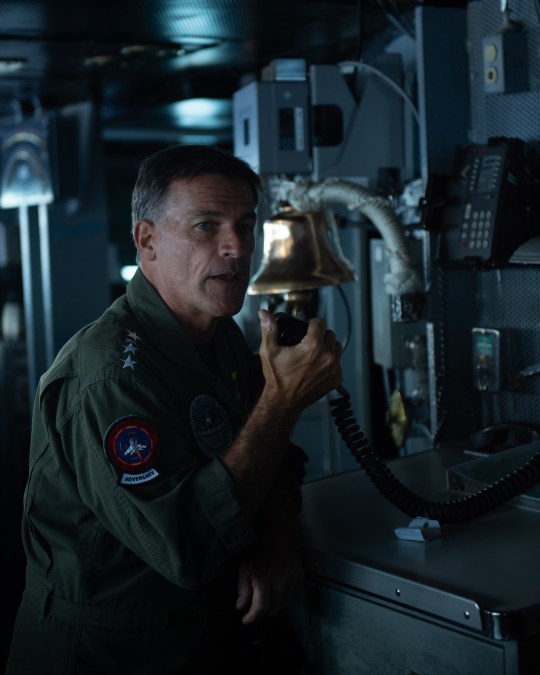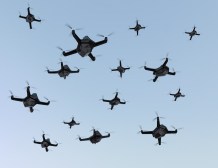Indo-Pacific Command moves to ‘plug in’ emerging tech for DOD through key programs, new directorate

Adm. John Aquilino is leading a broad organizational shift to stand up a new directorate within U.S. Indo-Pacific Command that sharply focuses on “plugging in” emerging military technologies proven in certain other Defense Department components’ portfolios and industry — to ultimately advance his team’s key programs at a much faster pace than ever before.
On Monday, the Indo-Pacom chief announced the establishment of the new Joint Mission Accelerator Directorate, which he’s forming in the months leading up to his retirement from the command to help it seriously tackle what he said is China’s “system-of-systems approach through all domains to attempt to deny every advantage that we have.”
“The speed and acceleration that they have shown — and they are delivering, right, when you talk about outposts — we all look at the Chinese and understand, truly, where they are and what they’re doing. It’s the largest military buildup since World War II, both in conventional forces and its strategic nuclear” arsenal, the commander said at the NDIA Emerging Technologies for Defense Conference and expo.
Broadly, he’s shaping this new directorate to “pull in” officials and assets from Pentagon elements that are hyper-focused on technology acceleration — like the Chief Digital and Artificial Intelligence Office (CDAO) and Defense Innovation Unit (DIU), among others — to directly support Indo-Pacom’s critical mission needs and pursuits by expediting their use of innovative capabilities.
The overarching intent is that, via this new hub, those collaborating organizations can help synchronize technologies for speedier use in the command’s major programs, including its “Stormbreaker” AI-enabled wargaming and planning initiative and the in-the-works multi-domain Joint Fires Network.
Aquilino confirmed that he’s spent a lot of time with DIU Director Doug Beck over the last several months puzzling out how to best shape and staff the envisioned Joint Mission Accelerator Directorate.
To start, DIU officials are embedding with the command in Hawaii, he said, to “help facilitate and drive this.”
“For me, I don’t care if it’s off-the-shelf, I don’t care if it was built before, I don’t care if it’s brand new technology,” Aquilino said. “Let’s just be clear, this is about delivering outcomes. So, we’re ready to take whatever you got.”
He added: “Joint Fires Network is going to be delivered today, and would be able to take advances — whether they be the AI tools and additional ISR … So, the design is to be able to plug in anything that delivers effects and then push it out through applications that are effective for the user.”
Beyond that though, the commander did not get deep into any specifics regarding the directorate’s near-term operations, or how it will be structured and funded.
During a meeting with reporters at the conference, former Deputy Defense Secretary David Norquist told DefenseScoop that the directorate’s creation in his view demonstrates how the department and its leaders are beginning to fully realize that the best way to understand the value of emerging technologies and promising prototypes is to “get it in the hands of users faster.”
“To use an example — the original Predator [drone] came out of DARPA — and it wasn’t enthusiastically embraced by the department, under the theory that ‘why do I need something that flies that doesn’t have a pilot?’” Norquist, who now serves as president and CEO of NDIA, said.
However, members of Congress continued to push the prototype, and it went through DOD’s test and evaluation process. “Then it went to [U.S. Central Command],” Norquist said. There, the remotely piloted system proved its value for warfighters.
“What [Adm. Aquilino] is wisely doing is pulling in all these other offices that live in this world and have exposure to things he hasn’t seen — and saying, ‘Come help me look at these technologies and experiment so that I can signal back to the leadership in the department, what would really make a difference in my life,’” Norquist told DefenseScoop.






